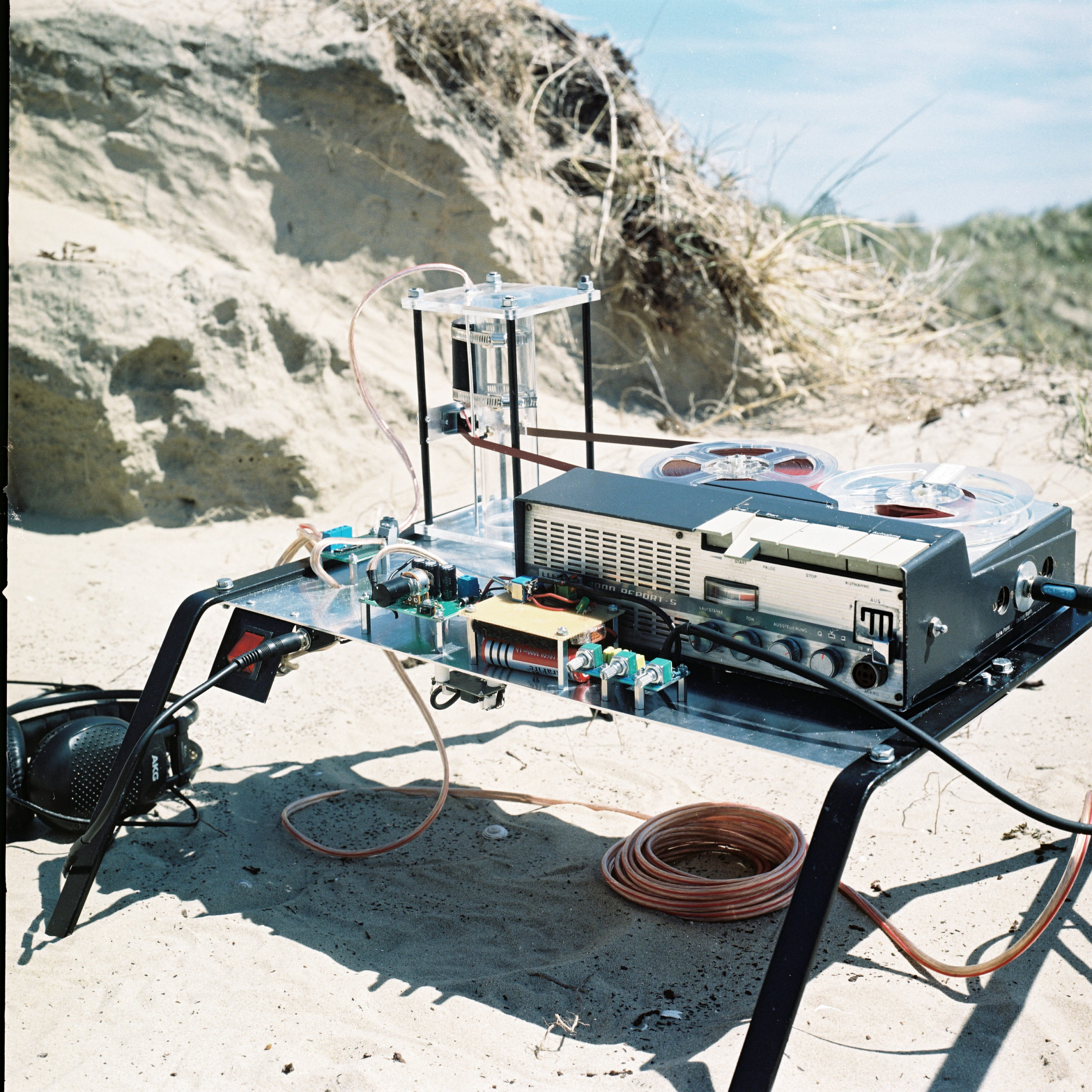Biological_Data_Transmission
[ Biological_Data_Transmissions ] [ 2022 ]
[ Fungal spores are continuously released into the air as clouds of single-celled particulates. Each spore carries individual genetic data, typically landing back onto organic matter only meters from where it was ejected. But occasionally, these spores drift into stronger air currents and the visible clouds dissipate, as spores are propelled into higher altitudes. Their direction set by fluctuating atmospheric conditions. As the spores spread further from their source, their concentration decreases leaving singular spores floating in the atmosphere. Their genetic transmissions never received ]

[ Tsushima Omega Tower 1977: 389-metre VLF Antenna ]
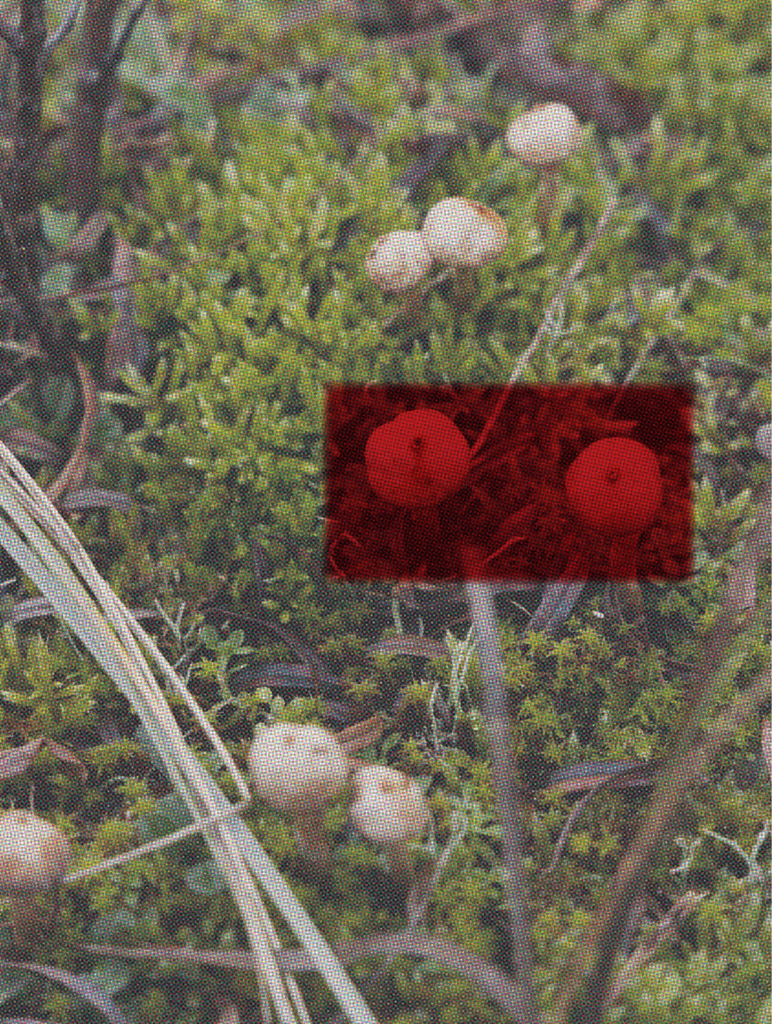
[ Tulostoma brumale/(Winter Stalkball) – A Saprobic spore ejecting fungal species ]
[ Fungal networks act like radio transmitters, disseminating packets of. information through the air only detected by receivers listening to the matching frequency. The VLF frequency band is specifically of interest, as it acts as a bridge between man-made and natural electromagnetic disturbances. Melding encoded transmissions from unknown Russian military bases, unbroken since the cold war, with the fleeting and elusive sound of ‘tweets’ created by the electromagnetic discharge of lightning striking on the other side of the planet. It is a turbulent band of low data rate signals encoded into waves hundreds of meters long. An amphitheater for listing into the faint transmissions of biological data. ]
[ Tulostoma brumale/(Winter Stalkball) “Transmitting” spores when triggered by water droplets ]
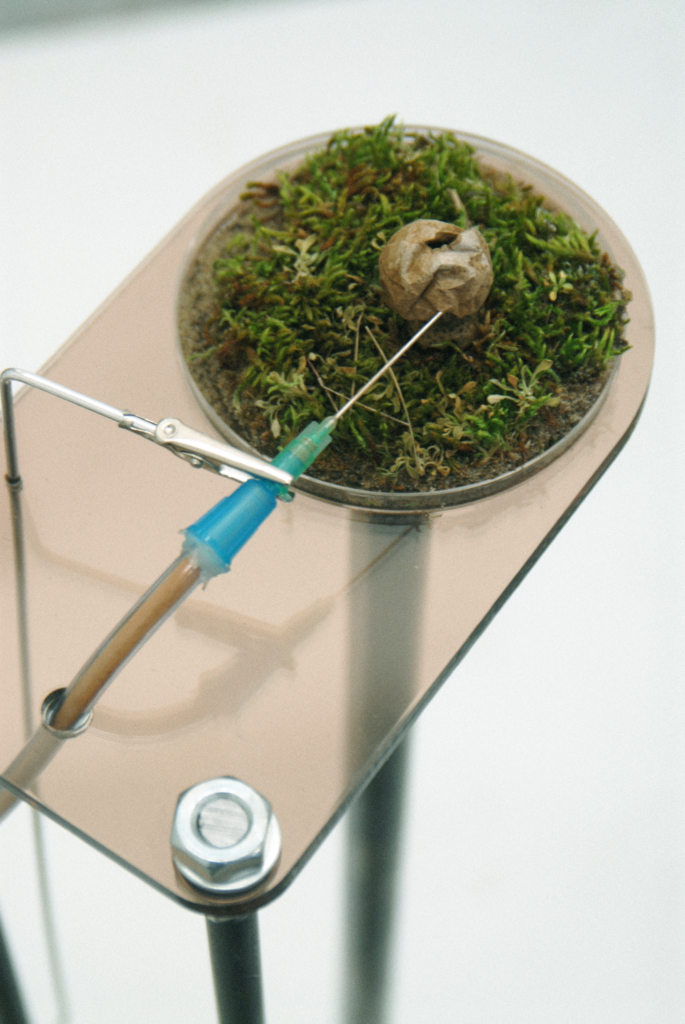
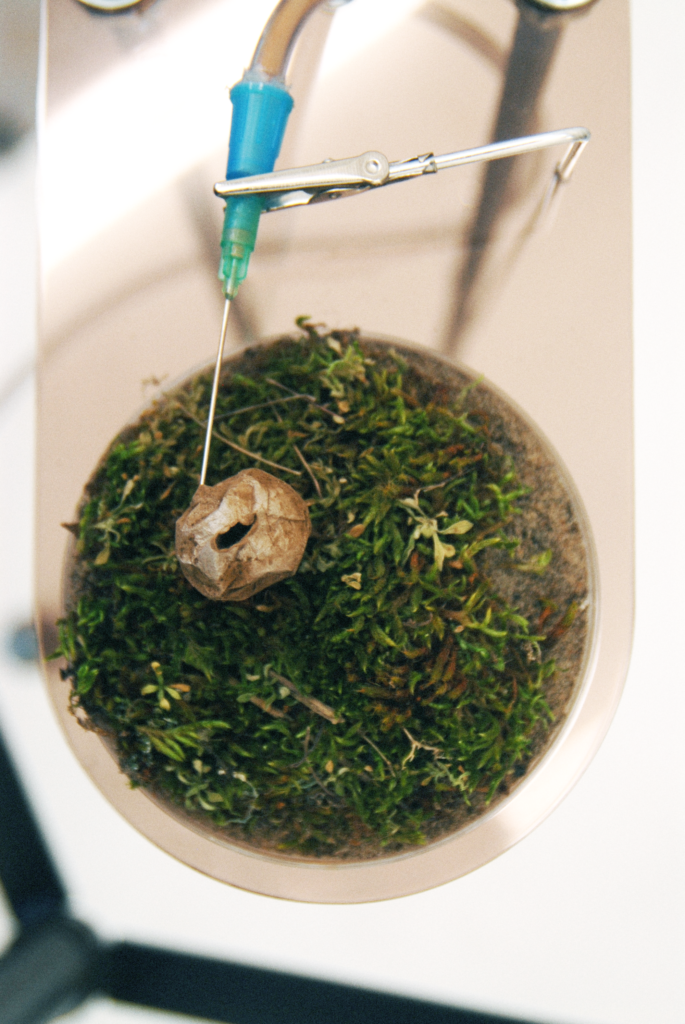
[ (Spore_trigger_system) utilizes a syringe to direct compressed blasts of air into the sporocarp of ______ species sample creating controlled releases of spore clouds]
[ [1/2] Spore_visualisation installation ]
[ (Video Documentation) A/V Installation for visualizing the trajectory of automated fungal spore clouds ]
The expanse between the ground and the upper atmosphere is not an empty void. It is an active space bound concentrically to the earth where mineral dust, pollen and fungal spores are in continuous flow. Imperceptible to our primary senses. The consequence of the movement of a singular particle is incalculably small. However, the mass migration of organic matter around the globe has an unimaginably large affect on our natural environment. When native European pollen grains are lifted by the North Atlantic Current into the higher altitudes of the Ferrel cell, they are ripped from the entangled ecological network they belonged to, and eventually transplanted into foreign land. Entirely at the will of chaotic low-pressure weather systems. If any biological matter endured the bitter temperatures and UV radiation it may embed itself within its new landscape and create cascading ecological affects. These biogeographical interactions take place everywhere, all the time. Constantly reshaping and modifying our environments.
Is it possible construct a system for looking into this illusive flurry of micron scale airborne activity?
Is it possible to magnify a singular particulate of Saharan sand before it becomes lost within the dutch dunes?
Could we capture lone fungal spores and begin tracing their course back to the point of transmission?
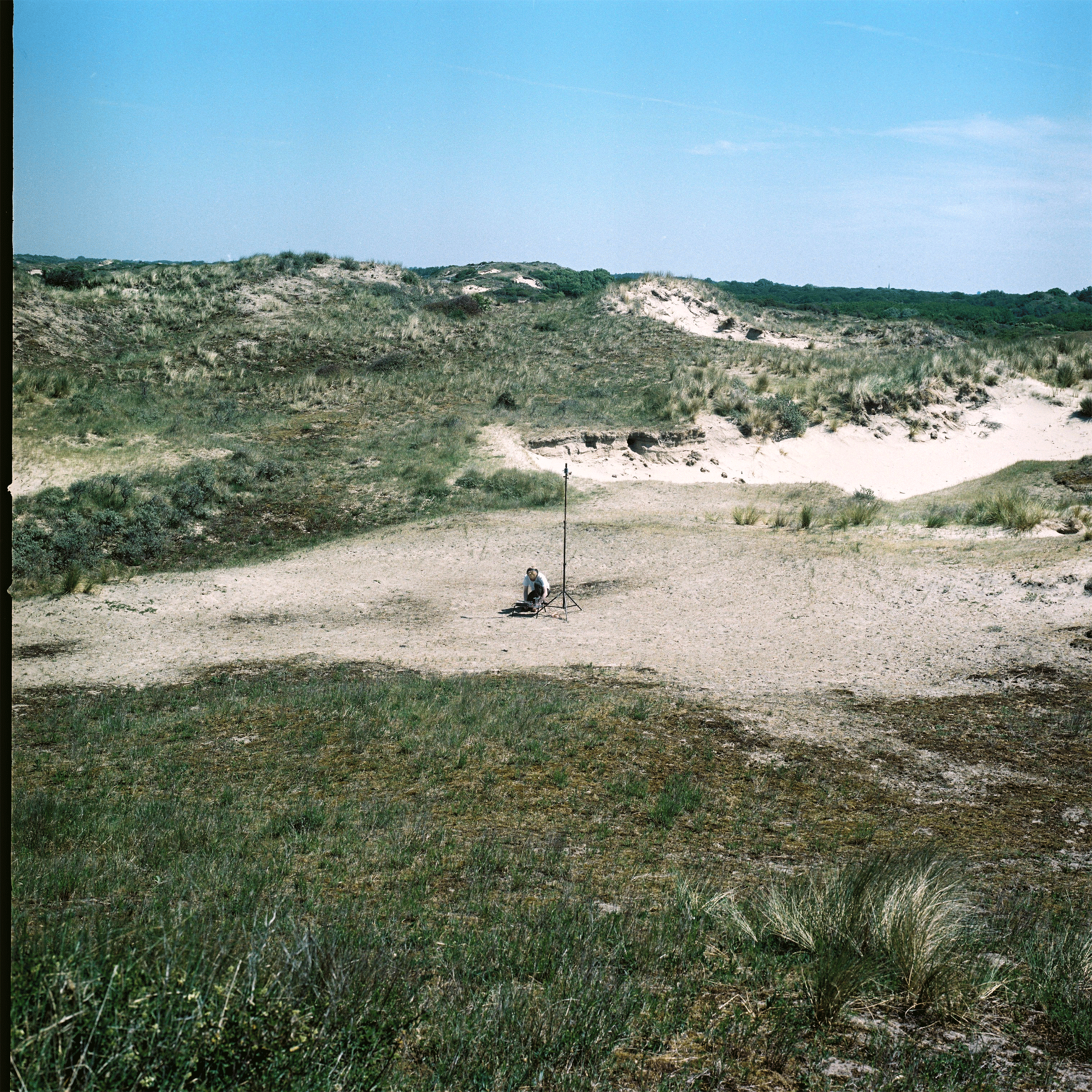
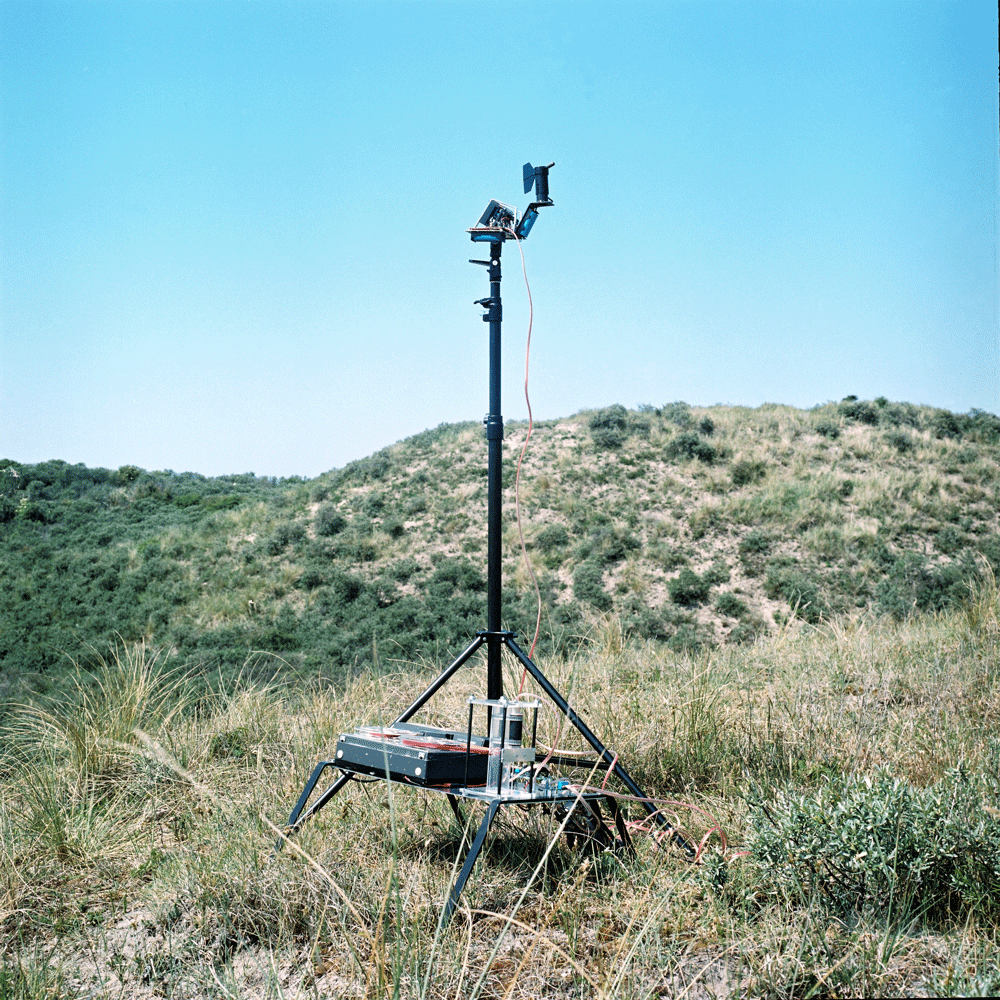
Biological_data_transmission is the title for this research, concerned with creating systems for identifying, amplifying and archiving airborne organic particulates and their global movements within the earths complex weather systems. OPM_1 is a sensing instrument that sonifies and archives the movement of particulates within the atmosphere.
OPM_1 is a sensing instrument that sonifies and archives the movement of particulates within the atmosphere. A singular electrical pulse is created when a UV laser transmitter/receiver registers a particle. This electrical pulse is then amplified by a transformer across a spark gap which embeds the pulse permanently onto electromagnetic tape. The pulse is then transducted into acoustical energy by a tape player. Creating a system for live monitoring the activity of airborne particulate matter.
